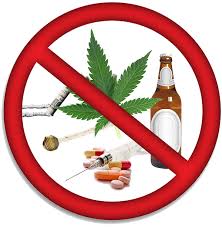 Businesses and companies across the country have been warned about the growing “ice epidemic” that has created considerable risks on work health and safety, strained labour productivity, and ripped workforce participation.
Businesses and companies across the country have been warned about the growing “ice epidemic” that has created considerable risks on work health and safety, strained labour productivity, and ripped workforce participation.
After a parliamentary investigation into the epidemic of crystal methamphetamine, the Australian Industry Group stated on Tuesday that the transport, manufacturing, and construction industries were the most particularly affected with the outstandingly rampant use of “ice” by workers in these industries and the prevalence of vehicles and heavy machinery.
Based on reports and studies conducted by the National Drug and Alcohol Research Centre, the high incident recording of methamphetamine use in Australia did not manifest any change between the years 2010 and 2013, with a notable 2.1% of the country’s population having used the drug in the past twelve months.
However, the figures showing methamphetamine users using ice or the crystalline form over other forms including “speed” rose from 21%t to 50.4%. It was also noted that the frequency of its use also significantly rose, with around 15% of users using the illegal drug at least on a weekly basis.
Chief Executive Innes Willox of Australian Industry Group said transport, manufacturing, and construction industries where workplace health and safety is crucial and users of the drug are placing lives of their co-workers as well as the general community at great risks.
Mr. Willox added that despite the safety concerns however, opposition from many unions arising from when workplace drug and alcohol testing is discussed has limited many employers from properly managing work health and safety risks.
Mr. Willox stressed that unions will have to drop their opposition and openly accept regular drug and alcohol testing implementations that will serve to discourage drug and alcohol use and eventually result in safer workplaces.
The Construction, Forestry, Mining, and Energy Union has announced in March of this year its full support for the “umbrella” drug and alcohol testing policies, but has however emphasised that they will only go for the saliva testing, not the testing using the urine.
Considered an enormous breakthrough for the industry last month, the Fair Work Commission upheld sustained the right of Port Kembla Coal Terminal top carry out random urine and saliva testing of the employees for both drugs and alcohol. The union is still appealing the decision.
In a report submitted to the joint parliamentary investigation, the Australian Medical Association stated that the most critical health impacts of crystal methamphetamine are confirmed to fail under mental health, specifically drug-induced psychosis of which the most popular symptoms include severe agitation, anxiety, paranoid delusions such as parasite or insect infestation.
While psychosis was a major concern, many users of crystal methamphetamine would also experience periods of aggression, agitation, damaged interpersonal relationships, impaired concentration, lost employment, and emotional instability.
The AMA confirmed that the use of crystal methamphetamine, which is the most dangerous form of the drug, is alarmingly growing.





